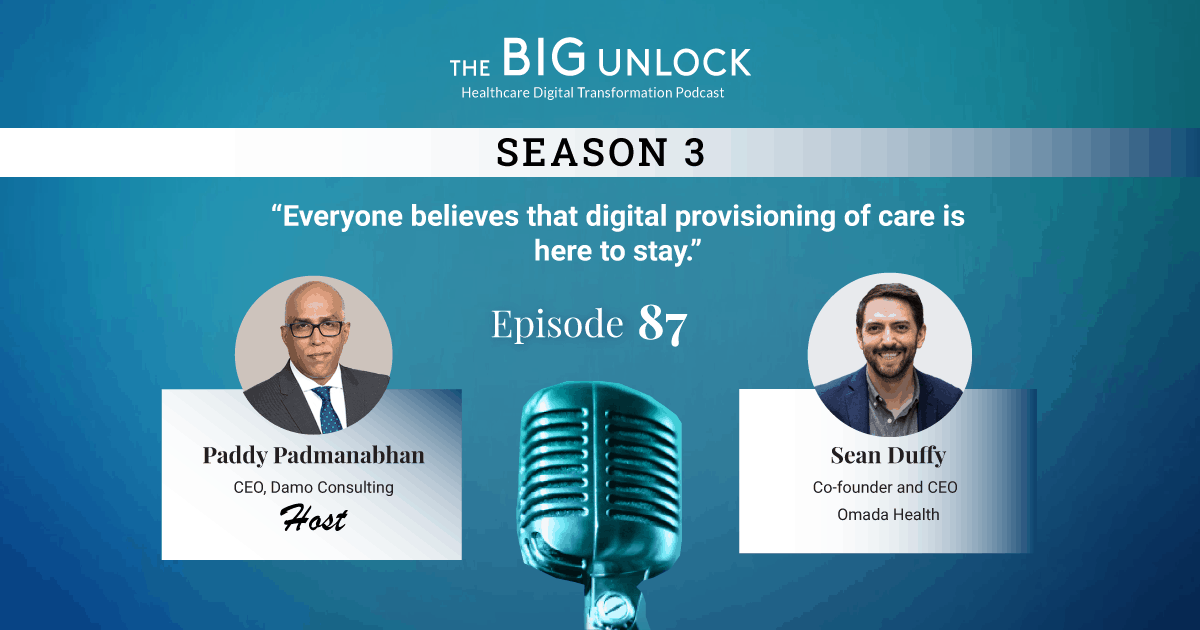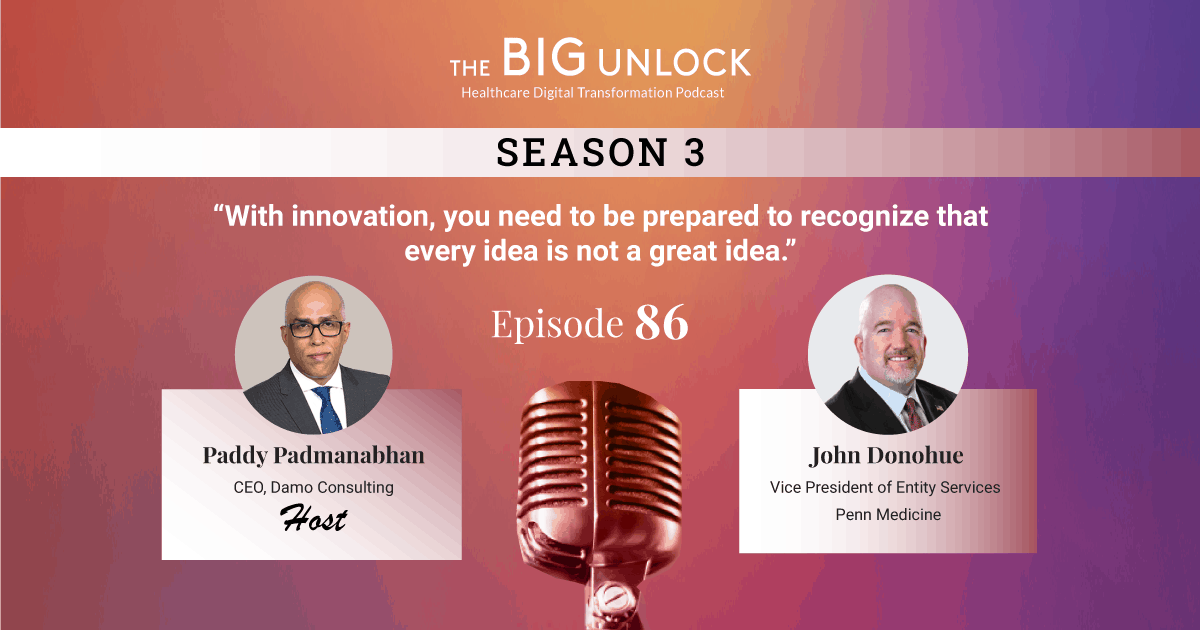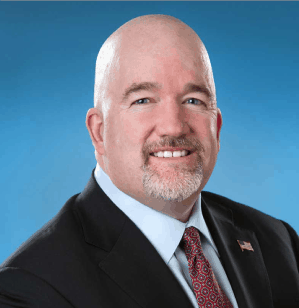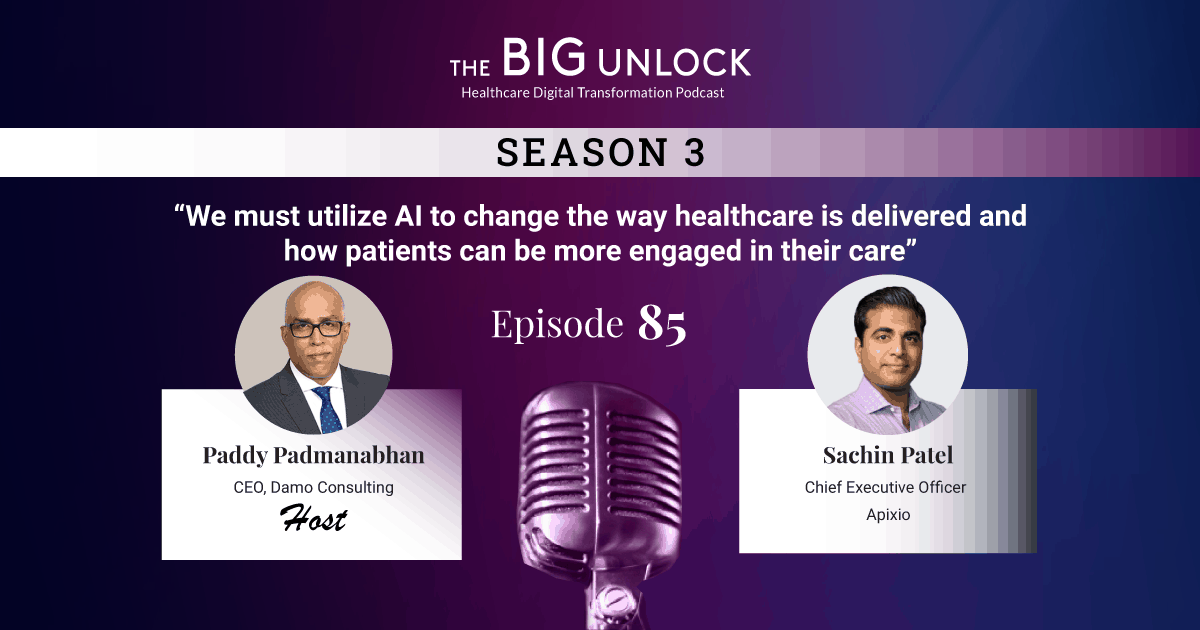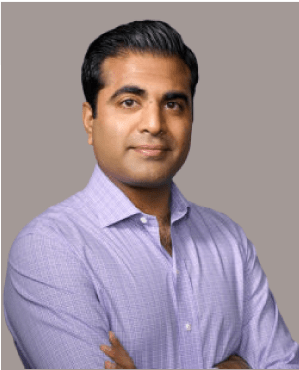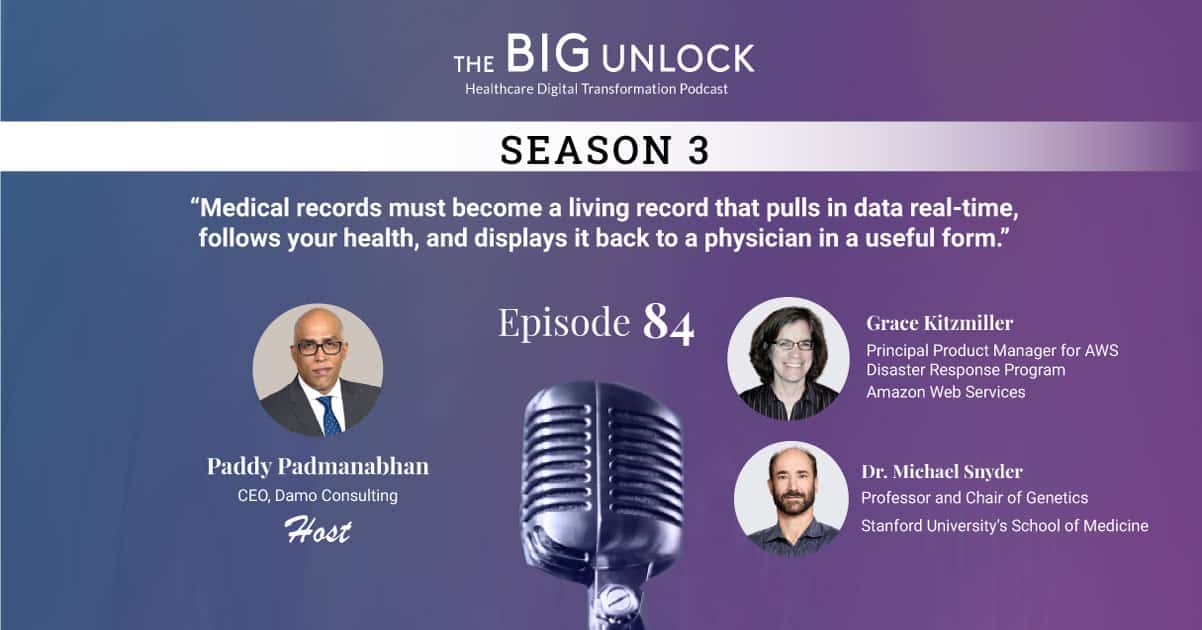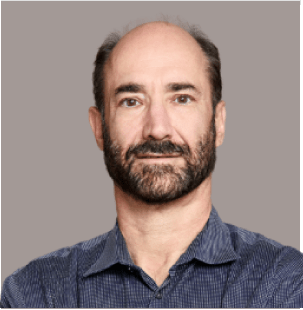Season 3: Episode #87
Podcast with Sean Duffy, Co-founder and CEO, Omada Health
"Everyone believes that digital provisioning of care is here to stay."
 Hosted by Paddy Padmanabhan
Hosted by Paddy Padmanabhan 
Share
In this episode, Sean Duffy, Co-founder and CEO of Omada Health discusses their journey as a virtual care company, primarily serving self-insured employers with a focus on supporting chronic disease care. Sean also talks about the thought process behind their newly launched offerings and how they stand against their competitors.
According to Sean, to be successful in digital health, it is important to keep up your learning curve, be patient, and operationally innovate within constraints. Payers, providers, and employer customers all have the same need – digital delivery of care. They all believe that digital provisioning of care is here to stay. This belief is bound to yield a remarkable transformation for healthcare. Take a listen.
Show Notes |
||||
| 00:41 | About Omada Health and how the company started. | |||
| 02:39 | What kind of enterprises do you mainly serve – payers, providers, employers? | |||
| 03:53 | Omada is a privately held company. Who are your major VC’s and how much the company has raised to date? | |||
| 06:13 | Omada is a pioneer in chronic care management using digital tools. Can you speak about your new services and the thought process behind launching these offerings? | |||
| 20:04 | What is your own view of where we ought to be, maybe 18-24 months from now? What does the hybrid world look like for you? | |||
| 22:55 | We are awash in VC funds at the moment, chasing digital health companies at every stage. What do you make of this abundance of capital and what is your advice to startups? | |||
| 25:44 | Big insurers and employers are beginning to acquire telehealth companies, and we’re also seeing a lot of M&A among digital health startups. What is driving this? | |||
| 27:41 | What is your view of the big tech firms and the role they're going to play going forward in how care is delivered in future? | |||
| 30:24 | What is your view on where the reimbursement environment is headed today in the market? If there is one thing that you would like the regulators to address, what would that be? | |||
Q. Can you tell us about how you got to start the company and when did you launch it?
Sean: Omada Health is a virtual care company. We specialize in longitudinal disease areas with a particular focus on chronic—those disease areas where you need a lot of longitudinal day-by-day support versus visit-by-visit support. We offer an integrated care suite of services in pre-diabetes, diabetes and hypertension, behavioral health, and musculoskeletal. We think that what digital can do best in healthcare is fill in gaps between visits. The company began as an internal project at IDEO. Prior to this, I was in medical school and was in an MD MBA program at Harvard. I had worked at Google before and between my first and second year in medical school, I took an internship at IDEO and thought I would go right back to medical school. But I sat close to this gentleman, Adrian James, who at that point ran medical products for IDEO. We became best friends. We got a little bit of a time and budget to think about transformational opportunities in digital health, and the result was Omada. Omada was founded in 2011. We just crossed our 10-year mark.
Q. What kind of enterprises do you mainly serve – payers, providers, employers?
Sean: Our primary focus is on self-insured employers. That turns into many relationships with payers as well and we do have many partnerships with providers, especially those who have their own health plans, like Intermountain Health, Kaiser Permanente, etc. Our primary operating model is to go to employers, share our vision on what care can be and how a different approach in the disease areas might benefit their employees, both from a clinical outcome, economic, and satisfaction standpoint. Often, they will see if they could find a way for us to work with their health plan to make the implementation easy and simple. In addition to the employers, we serve many health plan partnerships as well.
Q. Omada is a privately held company. Who are your major VCs and how much has the company raised till date?
Sean: We have raised over two hundred and fifty million dollars to date. It does take a lot of capital to start a healthcare company, and you must ensure that you are doing it in a way that earns the right to commercialize and what many times appropriately, very risk-averse by market. Healthcare is one undertaking that requires capital and enough to get started to the investors that we have. We are honored to have great folks from many, many worlds in the earlier stage side, great firms as venture partners like Andreessen Horowitz, Norwest, and Wellington Rock Springs Capital. On the provider side, we’ve had Kaiser Permanente, Intermountain, Providence invests. On the plan side, Cigna, Humana, Blue Cross Blue Shield of Minnesota. Those folks come from so many different worlds on the moment of convergence that we’re having right now in the US health care system between different disciplines.
Q. Omada is a pioneer in chronic care management using digital tools. Can you speak about your new services and the thought process behind launching these offerings?
Sean: It’s been a really neat moment of transformation and the newest areas – musculoskeletal disorders – was through the acquisition of an incredible company called Physera. The primary reason for expanding it has to do with two things. One, clinically Omada is very interested in disease areas where we think our core capabilities can make a difference and that a digital-first approach is a right approach. Not all, but we can really support people effectively from afar. In most cases, clinically it just felt so clear that there is a huge gap in access and quality and outcomes that digital could help bridge.
Second is the voices of our customers. Every year at our customer summits, we ask our customers what they want Omada to do, how we can serve them better, and what needs they have. We got persistent feedback that they wanted to do more and broaden our offerings to other areas in the benefits to simplify implementation and enrollment. But there is also a lot of clinical comorbidities. So, you can create elegant, coordinated care experiences by having an integrated suite in these critical longitudinal areas.
Q. The mental bandwidth that you need, and the resources and the infrastructure can also be a challenge, especially from a leadership standpoint. Does that, in some sense, distract you from the core mission?
Sean: The guidance that I would provide is that you really want to earn the right to enter new areas, but don’t do it too soon and don’t do it too late. Because it requires a lot of organizational transformation to go from one product line to multiple. It is never a simple journey because you have to rethink how you staff the product organization. You must think about how you train and staff your commercial organization; all the subject matter experts from the clinical team need to become fluent in all these conditioned areas.
Second is what I call selective breadth. So, we are the company that is going to focus on the key needs for our buyers and make sure that within those needs, we’re doing a great job in tying the room together and coordinating all the care between them in an elegant way. But it’s a very heavy undertaking. So, focus is so important for companies as they grow.
Q. From the customer standpoint, they see you as something today and then tomorrow you are a little more than that. You are offering new services when maybe to have existing relationships for those new services. How do you help them make the tradeoffs of the choices, especially as a new entrant into the field?
Sean: Firstly, it’s really important to be flexible. We must be able to support an a-la-carte intention. We share a vision on why all the infrastructure ties nicely together and why it may make sense to deploy more than one kind of program area from Omada. But you must be flexible with configurability, especially in markets where employers may have made some great decisions for them. You must approach it with a sense of humility and really listen to customers and fundamentally work not just to show and describe a potential value prop and why the entire suite in some might be better than the individual parts. Show it in the outcome. Show it in the clinical protocols, the rationale. And then, hopefully, you earn the right to support them in new ways. It is never an either-or, and you do need to remain flexible and true to your original product areas as well.
Q. From a competitive standpoint, one of your big competitors last year, Livongo, was acquired by Teladoc, and trying to offer several different things. What does it mean for a company like Omada Health and how do you see them? Also, what are your thoughts on the competitive landscape where you are?
Sean: First and foremost, we’re in early innings. But if you add up the numbers of people we have helped, about four hundred and fifty thousand in counting. I think for us it’s a little bit more in the prediabetes phase and for Livongo it’s more of type two. I think it was about the same when they sold to Teladoc. But look at the overall disease epidemiology of the metabolic disease. We have done nothing relative to improving the overall health curves and epidemiological curves of the country. So that is a statement on how much room there is to have a lot of players here. If we are taking different approaches in the market, I think both organizations will be hugely successful. We do have a common vision that is integrated care suite can make a difference here. We have our unique approaches and styles, and we are honored to compete with them and hopefully, they feel similarly.
Q. Digital health is having a moment with this billion and billions in venture capital money. They are going through a lot of consolidations. When you look at the marketplace out there, what are the things that you try to keep track of so that you can calibrate your progress against whether you are on the right track or not?
Sean: The number one is what our employers and plans are saying and telling us. My most refreshing and insightful moments are talking to our customers, and talking to our sales reps. We have lived in various walks of industry cycles. It is almost too easy sometimes to get caught up in the excitement of a deal or a merger or financing. I always try to remind our employers that let’s stay just true to serving our customers or members and think how you can do that better and all the rest will follow. If you are not in a position where you can ignore the cacophony and a hype cycle, you are not going to be in a position where you can stay true to your roots. Also, you will not be able to power through a cycle where there’s a critique about the digital health space. This is a multi-decade journey, so hang tight and stay measured and focused on serving customers and members. It’s a very dynamic marketplace and it’s an honor to be serving as an innovator in this moment in the U.S. healthcare system’s transformation because it’s really remarkable time.
Q. What is the one common theme that strikes or stands out that you hear from your employer customers versus your health plan customers versus your providers?
Sean: I think in-person care needs to be option B. Why would you drag someone into a waiting room of a clinic unless you could not solve their needs safely and effectively from afar? You can’t do everything from afar. Like, Omada will not be doing hip surgeries, but there is a lot that you can do remotely. What has happened due to COVID, it’s become an obvious that the digital delivery of care is here to stay. And that is something to be embraced as a fundamental part of the U.S. healthcare system. I think tomorrow’s payers will have network teams that set up networks with digital providers just like they do in network teams that set up networks with in-person providers. For all the stakeholders, it’s very hard now to find either an employer or plan or provider that does not have a digital care strategy that does not think that digital care in the digital provisioning of care is here to stay, and it will yield remarkable transformation.
Q. What is your own view of where we ought to be, maybe 18-24 months from now? What does the hybrid world look like for you?
Sean: I think what COVID did is it exposed huge opportunity, but also exposed some fissures because you cannot trick yourself into thinking that you can do everything digitally. A lot of my friends are not practicing docs, they are doing asynchronous or synchronous digital, like CareFirst. Think of patients that are in the primary care settings and how many you must send to in-person care, it’s actually a fair amount. So, you cannot accomplish everything afar. Omada is focused on disease areas where we think the bulk of the provisioning of care, the tipping point of 80 percent, can be done from afar safely and effectively. We have learned what does work and does not work, and that’s going to help us get into equilibrium, and it’s going to be a hybrid. I think we will end up in a world where every single health system, it does not matter if you’re UCSF or an independent two-person primary care practice, you will be doing some form of telemedicine – video visits or phone visits. And what is going to happen is companies like Omada will become experts in augmenting the in-person care system and filling in all the gaps. As the operational transformation, the pricing model transformation, the care team, and professional and personnel transformation required to orient toward longitudinal is quite heavy. So, I think some things will be adopted universally at the level of the current provider, and some things will stay in the cloud.
Q. The digital health landscape today has somewhere over 5000 digital health startups in the market, and there is a lot of VC money out there. What is your advice to startups and to VC firms who are getting into the digital space today?
Sean: I think I’d like to see the capital and space have a lot of smart minds run at hard problems and innovate and see what happens. The beautiful thing about the world of entrepreneurship and venture is not all going to work, but some are going to work beautifully. In the U.S. healthcare system, you cannot find a shortcut. You will not be able to disrupt from the side and go around the system like that is impossible, nor should that be the objective. You must learn where the value is, how a dollar flows to the system. You must be able to deal with the complex dynamics of navigating different insurance lines. You must plan a go-to-market strategy almost specific to each state because the state-by-state dynamics are entirely different.
The second is, ramp the learning curve, ask a lot of questions, be OK with that and do not try to judge the system; view it as it is and find a way to operationally innovate within the system constraints.
Q. Big insurers and employers are beginning to acquire telehealth companies, and we are also seeing a lot of M&A among digital health startups. Like Walmart, Cigna, etc., are acquiring companies. What is driving this?
Sean: I think they are listening to the same voices that we hear to. However, Walmart is a little bit different here. In the future, if you are a health plan and serve a self-funded employer, your self-funded employers will need to know what you are doing relative to digital care for their employees. You will then think through the pieces that you want to have in-house fundamentally and bring value to my customers and integrate with my additional services. Also, what are the elements that I want to partner with and find great companies to work with? I think it is an exciting time to be in this space and I love the new entrants. It is fun to watch a Walmart come in to care in different ways. I think Walmart will do extraordinary things to care for the country, as there are many of the plans making bets and innovations here.
Q. Amazon is among the big tech firms a little bit different because they are directly getting into the healthcare space instead of the others who are more about offering the technology enablement to deliver care more efficiently. What is your view of the big tech firms and the role they are going to play going forward in how care is delivered in the future?
Sean: I think what naturally tends to happen is companies end up being excellent at the things that are in the back of their core strengths. Look at Google, for instance, they are the sort of computer science miracles. Their approach to developing incredible machine learning and artificial intelligence models to look at radiological data and help augment clinicians’ interpretations of readings is extraordinary. That sort of deep computer science meets biology work will likely be where Google makes its biggest contributions. On the Amazon side, I think it’s complex, the supply chain and operations. And the acquisition of PillPack in the pharmacy is a great example. And then I put AmazonCare in the same category. It is logistically complex to deliver all care digitally. Amazon has a unique, beautiful approach, listening to the pragmatics of care delivery and recognizing that you need in-person care. Amazon approaches the market with a powerful sense of customer-centricity. They are learning the details and specifics that others have maybe tripped on in the past, and they will be very successful in time. It is not going to happen overnight. But that is a patient business, and that is a business that’s willing to put a lot of capital to work to write out whatever period it takes.
Q. In Telehealth, we have seen some of the waivers come in, not permanent yet, but the hope is that they will be there. We are seeing a shift from traditional payment models like PMPM to slightly different alternatives, emerging models. What is your view on where the reimbursement environment is headed today in the market? If there is one thing that you would like the regulators to address, what would that be?
Sean: My biggest worry is relative to the inability or potential for us to seize the opportunity that COVID presented to transform healthcare. Suddenly, we are doing fee-for-service through video, and we call that success at the end of the day. It is great that clinicians can now do video visit or a phone visit, but that is not the end state. Allowing flexibility in service models can accommodate either synchronous interactions or asynchronous interactions. So, people sometimes forget that a lot of care preference at the consumer’s hands might be the kind of text they email to their care professional. So, they ask for Medicare and regulators to open minds to ways to thoughtfully accommodate. Asynchronous building models and there is a way to do it, you can think through like a care episode where once it starts over 15 days, a clinician is allowed to interact in whatever way possible. Think of it as Medicare Advantage and ask that we align with the scope of services we provide. We have a monthly rate that we charge for providing that, and it includes devices, your primary coach or certified diabetes educator, your nurse or all the services we render inside that. But we retain the flexibility to personalize against the need.
About our guest

Sean Duffy is the Co-founder and CEO of Omada Health, a digital health program that combines the latest clinical protocols with breakthrough behavior science to make it possible for people with chronic conditions to achieve long term improvements in their health
Recent Episodes
About the host
Paddy is the co-author of Healthcare Digital Transformation – How Consumerism, Technology and Pandemic are Accelerating the Future (Taylor & Francis, Aug 2020), along with Edward W. Marx. Paddy is also the author of the best-selling book The Big Unlock – Harnessing Data and Growing Digital Health Businesses in a Value-based Care Era (Archway Publishing, 2017). He is the host of the highly subscribed The Big Unlock podcast on digital transformation in healthcare featuring C-level executives from the healthcare and technology sectors. He is widely published and has a by-lined column in CIO Magazine and other respected industry publications.
